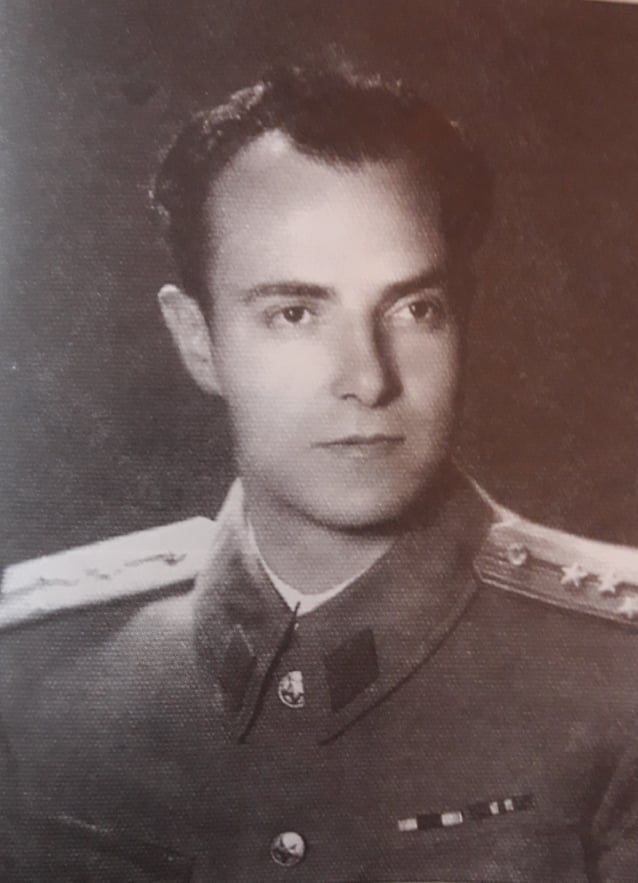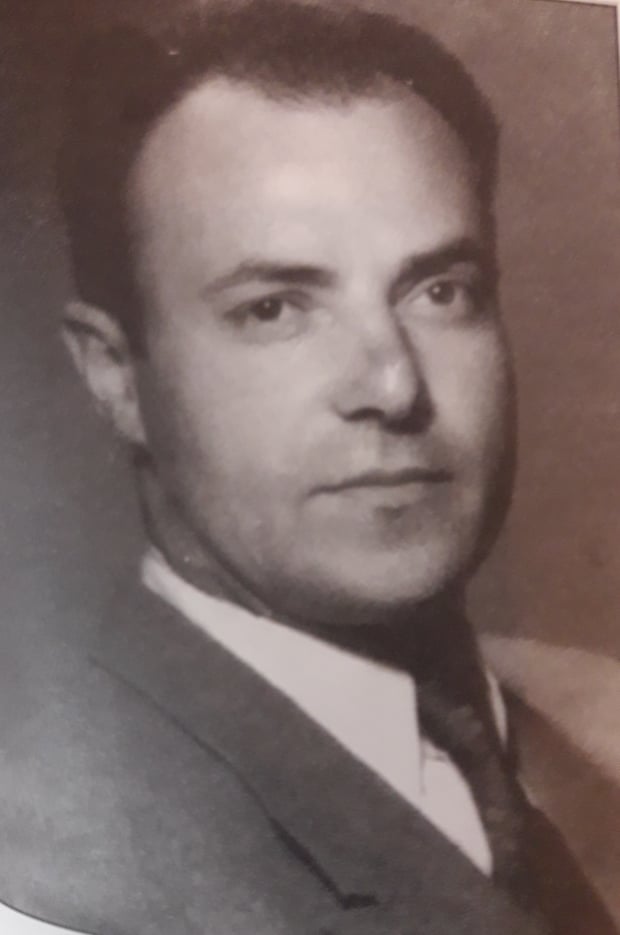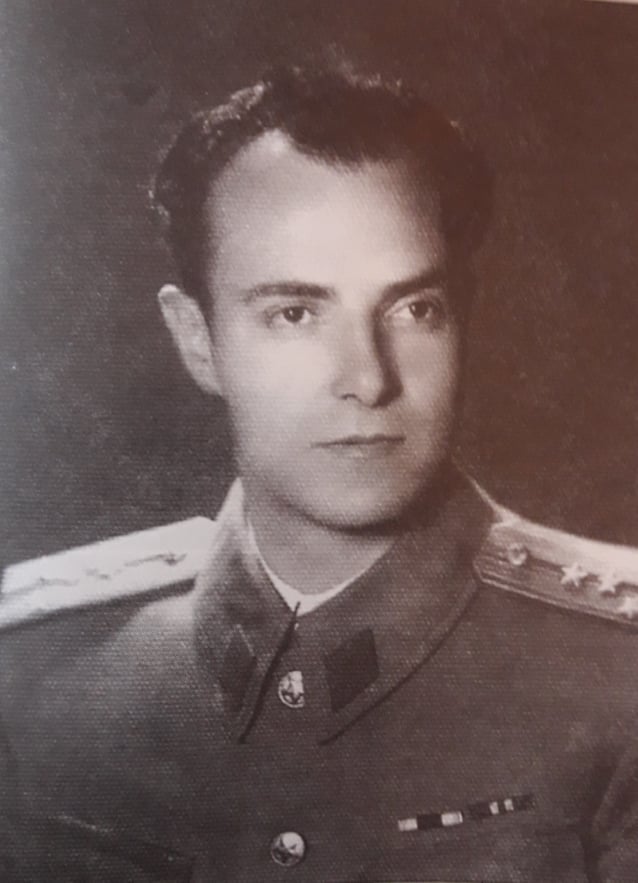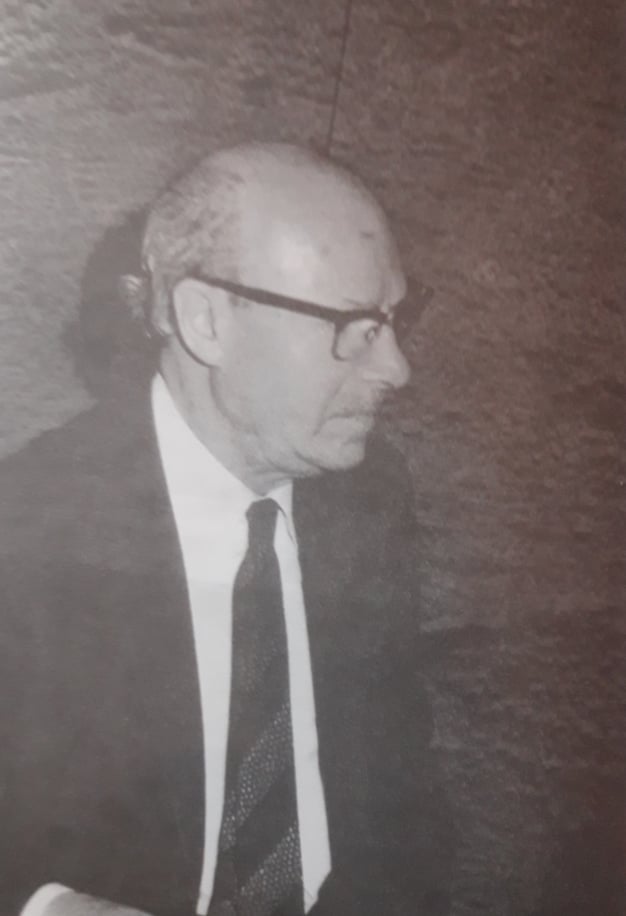ISAK ZION

Isak Zion was born on 16 April 1916 in Thessaloniki, as a first male child in the family. He is descended from parents Baruch and Marie Zion, who emigrated to their relatives in Thessaloniki during the Second Balkan War as refugees. The ancestors of the Zion family were Jews expelled from Spain who in 1498 moved first to Thessaloniki and then one part of the family in Shtip. In Thessaloniki, Baruch opened a cigarette and grocery store with some of the money he had with him as a refugee. The family was in Thessaloniki when World War I broke out, but despite the war, Baruch's business was doing well. After the end of the World War I, in 1919 the Zion family returned to their native Shtip and settled in the Jewish quarter located in the center of the city on both sides of the Otinja River. In Shtip, Baruch resumed his family craft business and opened a shop, while Marie was a housewife and took care of the home and children. At the age of 7, Isak Zion began his primary education at “St. Cyril and Methodius” school located in the yard of the St. Nicholas church near the Jewish Quarter, and he was also attending the school located in the newly built synagogue where he studied Hebrew, reading, writing, and Jewish history. In 1926, Isaac continued his education at the gymnasium in Shtip (incomplete gymnasium) where he was active in the literary society "Napredok". In the academic year of 1930, he resumed his gymnasium education in the trade gymnasium in Skopje, and during his stay he was accommodated in the house of his aunt Bella Navarro. He completed his high school education in 1934, after which he returned to Shtip where he worked administrative and bookkeeping works in the family store. During this time he was active in the Jewish choir led by Besalel Simangov Assel. In 1935, Isaac applied for a job competition at the State Mortgage Bank, after which he was accepted and assigned to a branch of the bank in Ljubljana. During his stay in Ljubljana, he became an active member of the trade union movement and a member of the KPJ, and was a participant in the March protests that took place in Ljubljana against Yugoslavia's accession to the Tripartite Pact. During that period he gained acquaintances with prominent persons from Macedonia and Yugoslavia, including Ljupcho Arsov, the major Mihajlo Apostolski, KPJ officials such as Mitar Bakic and Milovan Djilas. After the attack on the Kingdom of Yugoslavia, Isak Zion was first conscripted in Ljubljana, after which he was sent to Sarajevo in early April, and after the capitulation he first went to Skopje to his aunt Bella Navarro where he stayed for about two months and then returned to Shtip where joined the work of the local committee of the KPJ. Upon assignment from the local committee of the KPJ, Isak Zion established a party cell consisted of young Jews from Shtip, which included Pepo Levy, Avram Zion, Isak Levy, Mois Zion and Haim Levy. The group conducted trainings on handling and obtaining weapons and military equipment and preparations for combat, as well as a study of the SKP history. The members of this cell were tasked with forming subgroups that included 4 to 5 other young Jews, and by 1942 about 35 young Jews were part of the People's Liberation Movement in Shtip. In October 1941, under the chairmanship of Mirche Acev, the local military headquarters was established in Shtip, in which Isak Zion, as a member, was in charge of economic affairs. In the morning of 11 March 1943, Isaac was deported with the Jews from Shtip, but he managed to escape from the queue and take refuge with the KPJ activist, Firuz Demir. After the escape, Isak Sion went underground and through intermediaries he connected with Pepo Levi from Shtip, who had already been captured in the temporary camp in Skopje, in the Monopoly building. His goal was to give directions for organizing an escape from the Monopoly and to obtain information about gold hidden in the Jewish houses in Shtip in order to finance the National Liberation Movement (NOD). No escape from the Monopoly was organized, but Pepo Levy managed to secure information, after which Isak Zion and several associates managed to find gold in several Shtip houses that was used to finance the resistance. Until April 1943, Isak stayed in Shtip, after which he moved to the village of Ljuboten. On 19 May of the same year, he managed to join the Second Plachkovica detachment "Goce Delchev" near Shtip and they headed to the Plachkovica mountain, but soon the detachment was reduced in combat after which Isak again illegally resided in the vicinity of Shtip. On 6 September, Isak Zion joined the Sharplanina partisan detachment near the village of Vratnica, Tetovo, where he was appointed political commissar and took the conspiratorial name Istok. In late February 1944, Isak was deputy political commissar of the Third Youth Battalion of the Third Macedonian Strike Brigade and was wounded during the brigade's military operations. During this time, Isak became acquainted with other Jewish participants of the National Liberation War, including Estreia Ovadia-Mara, Estreia Levy, Samoil-Simo, Mordechai Nachmias-Lazo, and others. In April 1944, Isak took part in the fight against the Bulgarian occupying forces in the region of Kratovo, through the Osogovo Mountains and on the mountains of Plachkovica, Ograzhden, Belasica to the mountain of Krusha in the Aegean part of Macedonia. These hostilities, which lasted until mid-June 1944, were part of the so-called Spring offensive. Isak was elected by his comrades as one of the 116 delegates participating in the first session of ASNOM held on August 2, 1944 in the monastery "St. Father Prohor Pchinski. " At the end of August, Isak Zion, as a member of the Third District Committee of the CPM in the Stip region, was supposed to leave Kumanovo for Plachkovica together with the "Stiv Naumov" battalion. In the Shtip region, Isak developed a political activity, which was crucial in the organization of local people's liberation councils in several villages. The Regional People's Liberation Board was also organized, in which Isak was a member and secretary. On 8 November 1944, Isak was a participant in the liberation of the city of Shtip, and in December of the same year he was participating in the Second Session of ASNOM in Skopje. After the end of the war, district committees were established, and Isak was in charge of the Strumica committee. In April 1945, Sion also participated in the Third Session of ASNOM, after which he started working in the Finance Office of the People's Republic of Macedonia. During his career he also worked as Secretary General of the Prime Minister of the People's Republic of Macedonia, editor-in-chief of the Central Committee of the KPM, deputy governor of the National Bank of the Federal People's Republic of Yugoslavia, representative of the Chamber of Commerce in London and others. After the war, Isak Zion married Ljubica Dukoska and they had two children – Avram and Mirjam. He died in Belgrade on 28 May 1995. Isaac Zion has been awarded with several orders and plaques: Commemorative Medal of the Partisans from 1941 Order of Merits for the People, with golden wreath Order of Unity and Brotherhood, with silver wreath Order of Labor Order for Courage The “40 Years of the first assembly of ASNOM” plaque Plaque of the City of Belgrade



Share: << Back
Any help from you is more than welcome.
Donate to continue with the successful work and education




